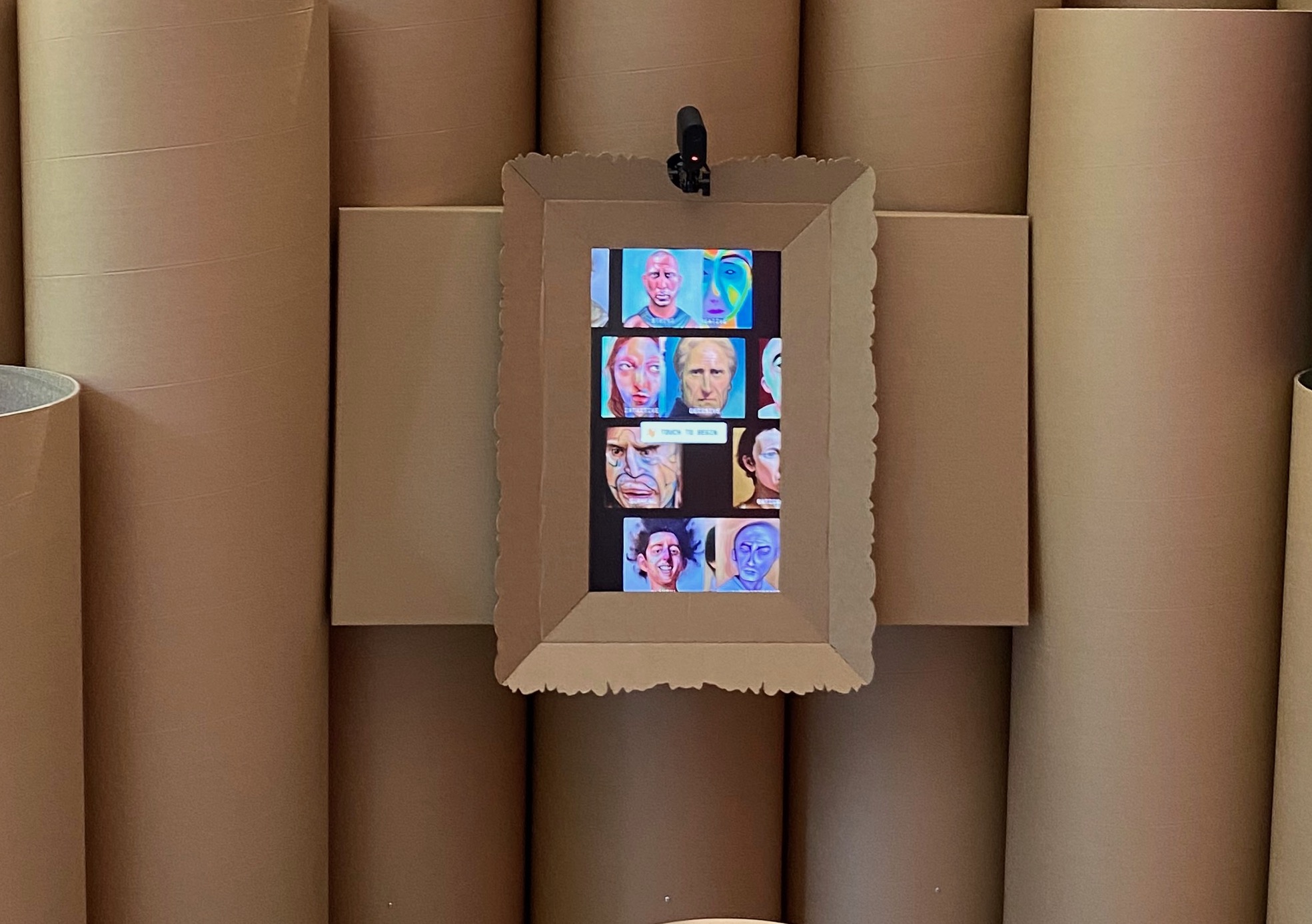Self_Portrait is an exploration of gender and AI. Through interconnected AI systems, we delve into the gendered connotations of certain words, particularly those related to personality traits.
AI system interconnectivity
Our project employs a trained classifier that assigns these words to users, followed by Stable Diffusion and controlnets to generate an AI impression of what a person embodying those words might look like. However, because we should never just accept what an AI has to say about us, Self_Portrait incorporates a second stage where users can choose to either embrace the assigned terms or modify them to better reflect their true selves. The system then generates a new portrait overlays it onto the viewer’s face using augmented reality.





Central to this artwork is the use of AI. It is through the intricate workings of AI, just like the complex nature of gender, that we examine the assumptions AI makes about us. Each day, various AI systems make snap judgments about us based on our online behavior, writing style, music preferences, and more. These systems create individual profiles that may not always align with our self-perception. This profiling, along with reinforced biases, can have far-reaching consequences in domains such as job applications, the justice system, and financial services. While our work cannot encompass the full breadth of AI’s access and overreach, it serves as a reminder of how easily we take for granted the labels assigned to us by different AI systems.

To develop the classifier, I collaborated with chatGPT, leveraging its expertise to compile a list of words associated with gender. We used Stable diffusion to generate batches of faces using these terms, enriching the dataset. This process aimed to shed light on the AI’s perception of gendered words, rather than solely relying on my assumptions. Through techniques like stable diffusion we can engage in a dialogue with the generative system, revealing its assumptions and biases on a broader scale. Incorporating AI into various stages of development, from ideation to programming, allows for a comprehensive examination of AI’s limitations.
About labels
At its core, this work revolves around labels and the choice to accept or reject labels imposed upon us. It was inspired by a thought-provoking conversation I had with my family about labels. In the past, society would often impose labels upon us, leading to ostracization. However, today we have the power to claim our own labels, which can help us find communities and connections. While labels can still be sources of exclusion, we now take a more active role in choosing, accepting and embracing labels. Self_Portrait encourages us not to passively accept labels bestowed upon us by unknowing and indifferent machines. It encourages us to consciously choose our own labels. Witnessing people interact with the system, laugh at the assigned labels, and then carefully select their own demonstrates the true essence of this work—the genuine care and curiosity we have for the meaning these words hold for us.
Collaboration
Ironically, as a design lecturer, my expertise in user design experience is limited as I usually work with code in the terminal. Fortunately, I had the privilege of collaborating with Melanie Huang, an exceptional technologist and creative. Together, we transformed my ideas into a cohesive and engaging artwork. The collaborative journey was truly wonderful, and I am forever grateful for Melanie’s contributions to the project.

